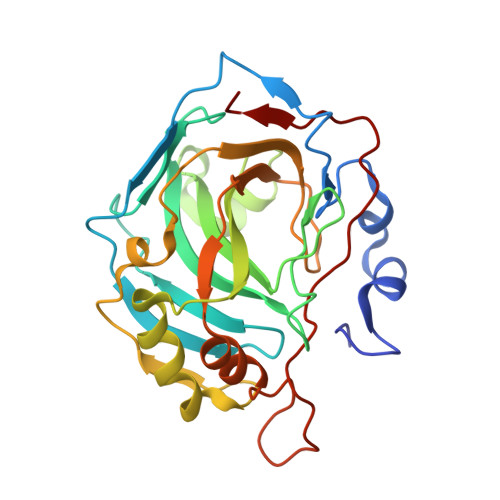Structural, catalytic and stabilizing consequences of aromatic cluster variants in human carbonic anhydrase II.
Boone, C.D., Gill, S., Tu, C., Silverman, D.N., McKenna, R.(2013) Arch Biochem Biophys 539: 31-37
- PubMed: 24036123
- DOI: https://doi.org/10.1016/j.abb.2013.09.001
- Primary Citation of Related Structures:
4L5U, 4L5V, 4L5W - PubMed Abstract:
The presence of aromatic clusters has been found to be an integral feature of many proteins isolated from thermophilic microorganisms. Residues found in aromatic cluster interact via π-π or C-H⋯π bonds between the phenyl rings, which are among the weakest interactions involved in protein stability. The lone aromatic cluster in human carbonic anhydrase II (HCA II) is centered on F226 with the surrounding aromatics F66, F95 and W97 located 12 Å posterior the active site; a location which could facilitate proper protein folding and active site construction. The role of F226 in the structure, catalytic activity and thermostability of HCA II was investigated via site-directed mutagenesis of three variants (F226I/L/W) into this position. The measured catalytic rates of the F226 variants via (18)O-mass spectrometry were identical to the native enzyme, but differential scanning calorimetry studies revealed a 3-4 K decrease in their denaturing temperature. X-ray crystallographic analysis suggests that the structural basis of this destabilization is via disruption and/or removal of weak C-H⋯π interactions between F226 to F66, F95 and W97. This study emphasizes the importance of the delicate arrangement of these weak interactions among aromatic clusters in overall protein stability.
Organizational Affiliation:
Biochemistry & Molecular Biology, University of Florida, P.O. Box 100245, Gainesville, FL 32610, United States.
















